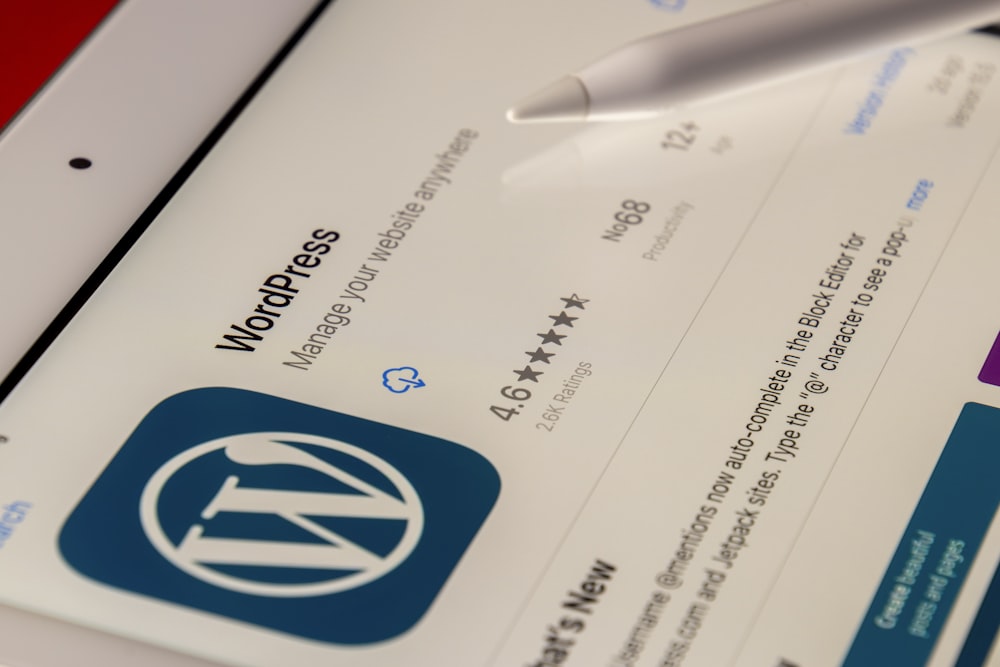Personal branding is a prevalent concept in today’s digital age. It’s an essential practice for entrepreneurs, freelancers, and business owners who aspire to stand out in the crowd. This article will guide you through 12 essential tools for personal branding that can help you build a robust and influential personal brand.
1. Task Management Tool: Asana
Asana is a top-rated task tracking and project management tool. Whether you’re planning projects for yourself or strategizing for your team, Asana is your go-to platform. The tool allows you to develop projects, assign specific tasks, and even include subtasks and due dates. With its versatile integration capabilities, Asana seamlessly merges with leading software like Slack, Dropbox, Github, Google Drive, Salesforce, and Zapier.
2. Blogging Platform: WordPress and Medium
Creating an active blog is a vital ingredient in your personal brand recipe. You can host your own blog on your website or employ an open writer’s platform.
If you’re keen on establishing your own site, you’ll first need a domain name, which can be purchased from any online domain registrar. GoDaddy is a recommended platform for domain purchase.
Once you’ve secured a domain, you can use WordPress to set up your website quickly. It offers a wide array of themes and customization options to help you create a website that truly reflects your brand.
On the other hand, if you’re targeting a specific audience and prefer not to deal with hosting accounts, Medium is an excellent platform to consider. It organizes posts to target the most appropriate audience, ranging from technology and entrepreneurship to culture and self-improvement.
3. Checkout Tool: Spiffy Checkouts
Spiffy Checkouts is a fantastic tool for selling your services and products as a part of your personal brand. It allows you to create mobile-optimized and conversion-optimized checkout pages, making the payment process fast and straightforward.
4. Note Organization Tool: Evernote
Evernote is an online tool that organizes notes, sketches, and your to-do list to optimize your time and schedule. It’s an efficient platform to keep you organized and on task as you build your personal brand.
5. Email Marketing Tool: Mailchimp, Active Campaign, Infusionsoft
Depending on your requirements, you can choose among Mailchimp, Active Campaign, and Infusionsoft for email marketing.
Mailchimp offers an easy drag and drop email builder, automation, integrations, and basic reports. Active Campaign offers automated options, segmentation, lead scoring, and social and behavioral data. If you’re looking for a robust CRM with marketing automation options, Infusionsoft is your best bet.
6. Video Tool: HD Video Camera
Videos are integral to creating connection and increasing your impact with your audience. An HD Video Camera is a worthy investment to ensure high-quality visuals. You might also consider a handheld gimbal to steady your footage.
7. Audio Tool: USB Microphone
Whether you’re running a podcast or doing voiceovers for videos, a high-quality microphone like Rode Podcaster or Audio-Technica AT2020USB+ is crucial. These USB microphones ensure consistent, high-quality sound.
8. Team Organization Tool: Slack
Slack is an excellent tool for team organization. It allows you to create specific channels around projects, topics, clients, etc., and offers voice and video calling options.
9. Graphic Design Tool: Canva
Canva is a user-friendly graphic design tool that can help you create ads, eBooks, or website graphics without requiring a professional graphic design degree.
10. Social Media Management Tool: Hootsuite and Edgar
Hootsuite and Edgar are powerful tools for managing your social media posts across multiple platforms. Hootsuite allows you to schedule posts, engage with comments, and view analytic data. Edgar, on the other hand, reshares your posts over time, ensuring you never run out of content.
11. Video Editing Tool: Camtasia and Screenflow
Camtasia and Screenflow are simple yet effective video editing software that can help you create professional-looking videos with ease.
12. Video Conferencing Tool: Zoom and GoToMeeting
Zoom and GoToMeeting are excellent tools for connecting with team members, clients, and fans from your personal computer. They provide high-quality video and audio sharing along with screen-sharing capabilities.
In conclusion, these tools cover the basic needs of anyone building a personal brand. With these 12 tools in your arsenal, you’ll be well-equipped to build a powerful personal brand.
Remember, building a personal brand isn’t just about showcasing your skills and expertise. It’s about creating a unique and authentic identity that resonates with your audience. So, start leveraging these tools for personal branding and embark on your journey to success!
Advanced Personal Branding Tactics
While basic personal branding involves establishing a unique identity and consistent messaging, advanced personal branding tactics delve deeper. They leverage strategic positioning, sophisticated digital tools, and nuanced communication to elevate your personal brand. Here’s how you can incorporate advanced strategies into your personal branding efforts:
1. Data-Driven Decision Making:
Utilize analytics to understand your audience better and tailor your personal brand to meet their needs and preferences. Tools like Google Analytics for your website and native analytics on social platforms can provide insights into your audience’s behavior and preferences. Use this data to refine your content strategy, optimize posting times, and improve engagement.
2. SEO Optimization for Personal Branding:
Apply SEO strategies to your personal website, blog, and even your social media profiles. Use relevant keywords in your content, meta descriptions, and tags to improve visibility in search engine results. Regularly updating your content and ensuring your website is mobile-friendly can also boost your SEO rankings, making you more discoverable to your target audience.
3. Thought Leadership and Content Marketing:
Establish yourself as a thought leader in your field by creating and sharing insightful content. This can include white papers, industry reports, and detailed blog posts that address current trends, challenges, and solutions in your industry. Hosting webinars, participating in podcasts, or speaking at industry events can also enhance your reputation as an expert.
4. Personal Branding Through Storytelling:
Develop a compelling narrative around your personal brand. Share your journey, challenges, successes, and lessons learned in a way that resonates with your audience. Storytelling can create a stronger emotional connection and make your brand more memorable and relatable.
5. Strategic Networking and Collaboration:
Build relationships with other professionals and influencers in your field. Collaborating on projects, contributing to each other’s content, or simply networking can expand your reach and association with other respected individuals and brands. Use platforms like LinkedIn to connect with industry leaders and engage in meaningful conversations.
6. Leveraging Multimedia Content:
Diversify your content strategy by incorporating multimedia elements such as videos, podcasts, and infographics. These formats can help you reach a broader audience and cater to different content consumption preferences. They can also make complex information more accessible and engaging.
7. Personalized Marketing and Engagement:
Use email marketing, social media, and other platforms to engage directly with your audience. Personalize your communications based on user behavior and preferences to make your messages more relevant and compelling. Prompt responses to comments, messages, and emails can also enhance your brand’s approachability and customer service reputation.
8. Continuous Learning and Adaptation:
The digital landscape and industry trends are constantly evolving, so it’s crucial to stay informed and adaptable. Invest in ongoing education and professional development to keep your skills and knowledge up-to-date. Being at the forefront of new trends and technologies can set you apart as an innovative leader in your field.
Advanced personal branding is about more than just maintaining an online presence; it’s about strategically positioning yourself as an authority, leveraging data and technology, and creating deep connections with your audience. By implementing these advanced tactics, you can elevate your personal brand to new heights and open up new opportunities for professional growth and success.
Integrating Personal Branding Tools for Synergy
Creating a powerful personal brand involves more than using individual tools independently. It requires integrating these tools to work together seamlessly, creating a cohesive and comprehensive branding strategy. Here’s how to integrate various personal branding tools for maximum synergy:
1. Consolidating Your Online Presence
Start by ensuring your personal brand is consistent across all platforms. Your website, social media profiles, and blogs should all have a unified theme, voice, and messaging. Use a tool like Canva to create consistent graphics and branding elements that can be used across your website, LinkedIn profile, Twitter header, and other platforms. This visual consistency helps reinforce your brand identity.
2. Content Creation and Distribution
Leverage your blog on WordPress or Medium as the central hub for your content creation. Use this content to showcase your expertise and share your insights. Then, use tools like Hootsuite or Edgar to schedule and distribute snippets or adaptations of this content across your social media channels. This not only increases your content’s reach but also drives traffic back to your main platform, enhancing your audience’s engagement with your brand.
3. Email Marketing Integration
Use Mailchimp, Active Campaign, or Infusionsoft to create an email marketing campaign that complements your content strategy. For instance, if you post a new blog article, you can send a summary or teaser to your email list with a link to read the full post on your website. Integrate a signup form on your blog to collect email addresses, offering a freebie such as an eBook or a white paper created in Canva to encourage sign-ups.
4. Task Management and Team Collaboration
If you work with a team or manage multiple projects, integrate Asana with Slack for seamless project management and communication. This ensures everyone is on the same page, deadlines are met, and content is produced and published efficiently. You can also link Asana with tools like Google Drive or Dropbox for easy access to shared documents and resources.
5. Utilizing Multimedia for Greater Impact
Integrate your video and audio content across your platforms for a richer user experience. For example, embed YouTube videos into your WordPress blog, share them on social media platforms, and include video links in your email newsletters. Similarly, if you have a podcast, promote it on your blog, include episode links in your emails, and share them on social media. Tools like Camtasia and Screenflow can help edit your video content, while USB microphones ensure high-quality audio for podcasts.
6. Analytical Tools for Feedback and Improvement
Use Google Analytics on your website to track visitor behavior and content engagement. Integrate this data with social media analytics provided by Hootsuite or individual platforms to gain a comprehensive view of your audience’s preferences and behaviors. Use these insights to refine your content strategy, optimize your posting schedule, and tailor your messages to meet your audience’s needs better.
7. Networking and Personal Interaction
Finally, integrate your personal interactions with your online branding efforts. Use your social media platforms to promote and share insights from networking events or industry conferences you attend. Conversely, leverage your online content and reputation when attending these events by sharing your articles, videos, or professional insights in conversations.
Integrating personal branding tools requires strategic planning and execution. By ensuring consistency across platforms, leveraging content effectively, maintaining clear communication within your team, and using analytics for continuous improvement, you can create a synergistic personal branding strategy. This integrated approach not only amplifies your brand’s reach but also creates a more dynamic and engaging experience for your audience.
Personal Branding Workshops and Resources
Building a compelling personal brand is an ongoing process that benefits greatly from continuous learning and development. Whether you’re just starting out or looking to refine your existing brand, there are numerous workshops and resources available that can provide valuable insights and guidance. Here’s a breakdown of different types of personal branding workshops and resources to consider:
1. Online Workshops and Webinars
Many experts and thought leaders in personal branding offer online workshops and webinars. These can range from free introductory sessions to comprehensive paid courses. Platforms like Coursera, Udemy, and LinkedIn Learning host a variety of personal branding courses covering basics to advanced strategies. Topics might include building your brand narrative, social media branding, content creation, and networking strategies.
2. In-person Workshops and Seminars
Attending in-person workshops and seminars provides the added benefit of networking with other professionals. These events are often hosted by industry groups, professional organizations, or personal branding experts. They can offer deeper, more interactive learning experiences, including group activities, one-on-one coaching sessions, and live Q&A segments.
3. Books and eBooks
There is a wealth of knowledge available in books dedicated to personal branding. Titles like “Crush It!” by Gary Vaynerchuk, “Reinventing You” by Dorie Clark, and “BrandingPays” by Karen Kang provide diverse perspectives and strategies. Whether you prefer physical books or eBooks, dedicating time to read and absorb insights from these works can significantly enhance your understanding and application of personal branding principles.
4. Podcasts and Blogs
For those who prefer learning on the go, podcasts and blogs are excellent resources. They provide current and accessible insights into personal branding trends and strategies. Podcasts such as “The Personal Branding Podcast” or “Build Your Personal Brand” offer episodes on various aspects of personal branding. Similarly, following reputable blogs in the marketing and branding space can provide ongoing tips and inspiration.
5. Networking Groups and Online Communities
Joining networking groups or online communities related to personal branding can provide support, feedback, and new opportunities. Platforms like LinkedIn, Facebook, and Reddit host various personal branding and industry-specific groups. Participating in these communities can help you stay informed about the latest trends and best practices while connecting with like-minded individuals.
6. Personal Branding Consultants and Coaches
For a more personalized approach, consider working with a personal branding consultant or coach. They can provide tailored advice, one-on-one coaching, and detailed feedback on your personal branding efforts. While this option may be more of an investment, the personalized attention and customized strategies can lead to more significant and rapid improvements in your personal brand.
7. Templates and Tools
Lastly, make use of templates and tools designed to streamline the personal branding process. From resume and portfolio templates to social media audit checklists, these resources can save time and ensure you’re covering all bases in your branding efforts. Websites like Canva offer branding templates, while tools like Hootsuite provide social media management solutions.
Investing time and resources into your personal branding education can pay dividends in career opportunities and professional growth. By exploring a mix of workshops, reading materials, digital content, and community engagement, you can develop a well-rounded and effective personal branding strategy. Remember, personal branding is a journey, not a destination, and these resources can guide you every step of the way.
Personal Brand FAQs
1. What are the 5 E’s of personal branding?
The 5 E’s of personal branding represent a framework to help individuals build and communicate their brand effectively:
- Explore: Discover your unique attributes and what you stand for.
- Express: Clearly articulate your personal brand and values.
- Exude: Consistently demonstrate your brand traits and values in all actions.
- Engage: Connect with your audience and build relationships.
- Evaluate: Regularly assess and refine your personal brand.
2. What are the 5 C’s of personal branding?
The 5 C’s provide a guideline for establishing and maintaining a strong personal brand:
- Clarity: Be clear about who you are and what you offer.
- Consistency: Maintain a uniform image and message across all platforms.
- Constancy: Be continuously visible and active in your field.
- Credibility: Establish yourself as a reliable and trustworthy professional.
- Charisma: Develop and show your unique charm and appeal.
3. What are the 4 C’s of personal branding?
A simplified version of the personal branding essentials:
- Clarity: Clearly defining your brand and goals.
- Consistency: Uniform messaging and visuals.
- Constancy: Regular presence and activity.
- Confidence: Strong belief in your own abilities and value.
4. What are the 5 P’s of personal branding?
These P’s help individuals shape and communicate their personal brand:
- Purpose: Understanding and conveying why you do what you do.
- Positioning: Defining how you wish to be seen in the marketplace.
- Presentation: How you express your brand through appearance, communication, and behavior.
- People: Building and nurturing professional relationships.
- Persistence: Staying committed to your personal brand and continuous improvement.
5. What are the 7 pillars of personal branding?
These pillars form the foundation of a strong personal brand:
- Passion: What drives you.
- Purpose: Your overarching goal.
- Positioning: Your niche or unique selling proposition.
- Performance: Your achievements and skills.
- Presentation: How you market yourself.
- Promotion: How you communicate your brand to the world.
- Persistence: Your commitment to maintaining your brand.
6. What are the 3 C’s of personal branding?
An even more condensed version of personal branding principles:
- Clarity: Being clear about your brand identity.
- Consistency: Ensuring your brand message is uniform.
- Constancy: Being regularly active and visible in your chosen domain.
7. What are the best personal branding strategies?
Effective personal branding strategies include:
- Defining and articulating your unique value proposition.
- Consistently showcasing your expertise and knowledge.
- Engaging with your audience through multiple channels.
- Networking and building relationships within your industry.
- Seeking feedback and continuously refining your brand.
8. What is the formula for personal branding?
While there’s no one-size-fits-all formula, a common approach is:
- Identify your unique strengths and value (Clarity).
- Develop and maintain a consistent message and image (Consistency).
- Regularly engage with your target audience (Constancy).
- Adapt and evolve based on feedback and changes in your industry (Adaptability).
9. What is PR in branding?
In branding, Public Relations (PR) refers to strategies and tactics used to manage how a person or business is perceived by the public and the media. PR activities can include press releases, public appearances, social media interactions, and any other methods used to shape and communicate the brand’s message and values to build a positive reputation.
Featured Image Credit: Photo by Corinne Kutz; Unsplash – Thank you!
















